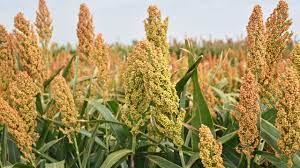US Sorghum Emerges as Key Solution to India’s Coarse Grain Shortage
India is grappling with a potential shortage of coarse grains due to its expanding population, below-average monsoon rains, and increasing corn consumption for various purposes including animal feed and industrial uses. Given India’s current import bans on genetically modified (GM) ingredients and its historical reliance on sorghum, there is a significant need to address the escalating scarcity of coarse grains in the country.
In January, the US Grains Council (USGC), in collaboration with the United Sorghum Checkoff Program (USCP) and the National Sorghum Producers (NSP), undertook an exploratory trade mission to India. Over five days and across six cities, the mission involved meetings aimed at identifying avenues for US sorghum in India’s market, including human consumption, and industrial applications such as starch extraction, animal feed, and ethanol production.
The team conducted a thorough analysis of the Indian food sorghum market and its supply chain, engaging with small-scale farmers cultivating jowar (Indian sorghum). They also explored opportunities for integrating US sorghum into higher-end food products.
Importance of the Mission
A key focus of the mission was to highlight the unique tannin-free characteristics of US sorghum, which could significantly benefit India’s feed manufacturing industry. Unlike Indian jowar with its high tannin content, US sorghum presents a valuable alternative for animal feed. The team emphasized US sorghum’s high-quality feedstock potential to the Indian feed industry, aiming to secure its inclusion in India’s expanding animal feed market.
Additionally, the team visited a starch processing plant, where they presented research funded by USCP. This research, conducted at the University of Illinois, demonstrated sorghum’s superior starch yields compared to Indian corn, the primary raw material for Indian starch manufacturers.
Benefits of US Sorghum(Jowar)
Furthermore, the team advocated for the use of US sorghum in ethanol manufacturing, aligning with India’s environmental goals. With India mandating an E20 blend policy to be achieved by 2025/2026, there is a growing demand for sustainable feedstocks for ethanol production. US sorghum, with its low water consumption, minimal fertilizer needs, and low-carbon production requirements, emerges as an ideal solution to support India’s climate objectives through renewable fuels.
Lastly, the USGC plans to continue educating India’s industry leaders on the benefits of incorporating U.S. sorghum across various sectors, capitalizing on its unique attributes and aligning with India’s push towards sustainable agriculture and environmental stewardship.
(Inputs taken from High Plains Journal)
This article has been republished from The Krishi Jagran.

